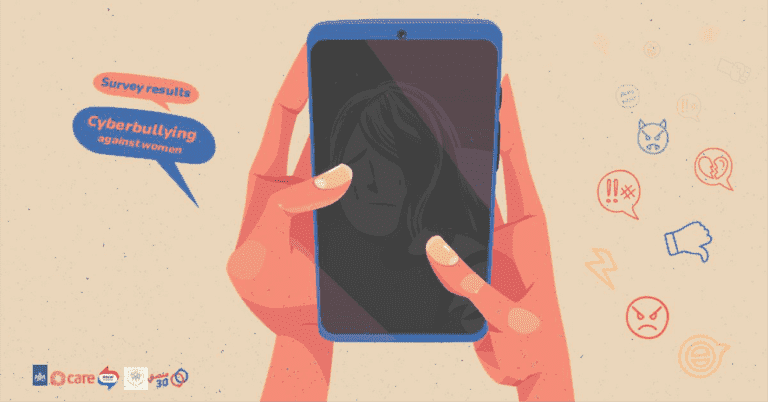Within a segment of 1172 Yemeni youth participating in the “Cyber bullying against women” survey, only about 16 people admitted that they bullied others on social media platforms, while at least 86 people said that they were victims of some form of cyber bullying.
In contrast to this percentage (15%), 85% of respondents said that they did not take any part to an incident of cyberbullying. This includes being victims, bullies, present to the incident or having knowledge of it. Females here are more likely to be a party by 21% compared to 11 % for males.
The differences here show that those under the age of 20 are more likely to be victims of cyber-bullying with 60% of them. In contrast, the most bullying groups are those aged 20-24 years with 21%. In terms of gender differences, females are more likely to be victims of bullying by 69%, compared to males (32%), who are also more bullies than females by 15% male bullies, compared to 3% female bullies, according to the “open choice” section in the answers to the survey.
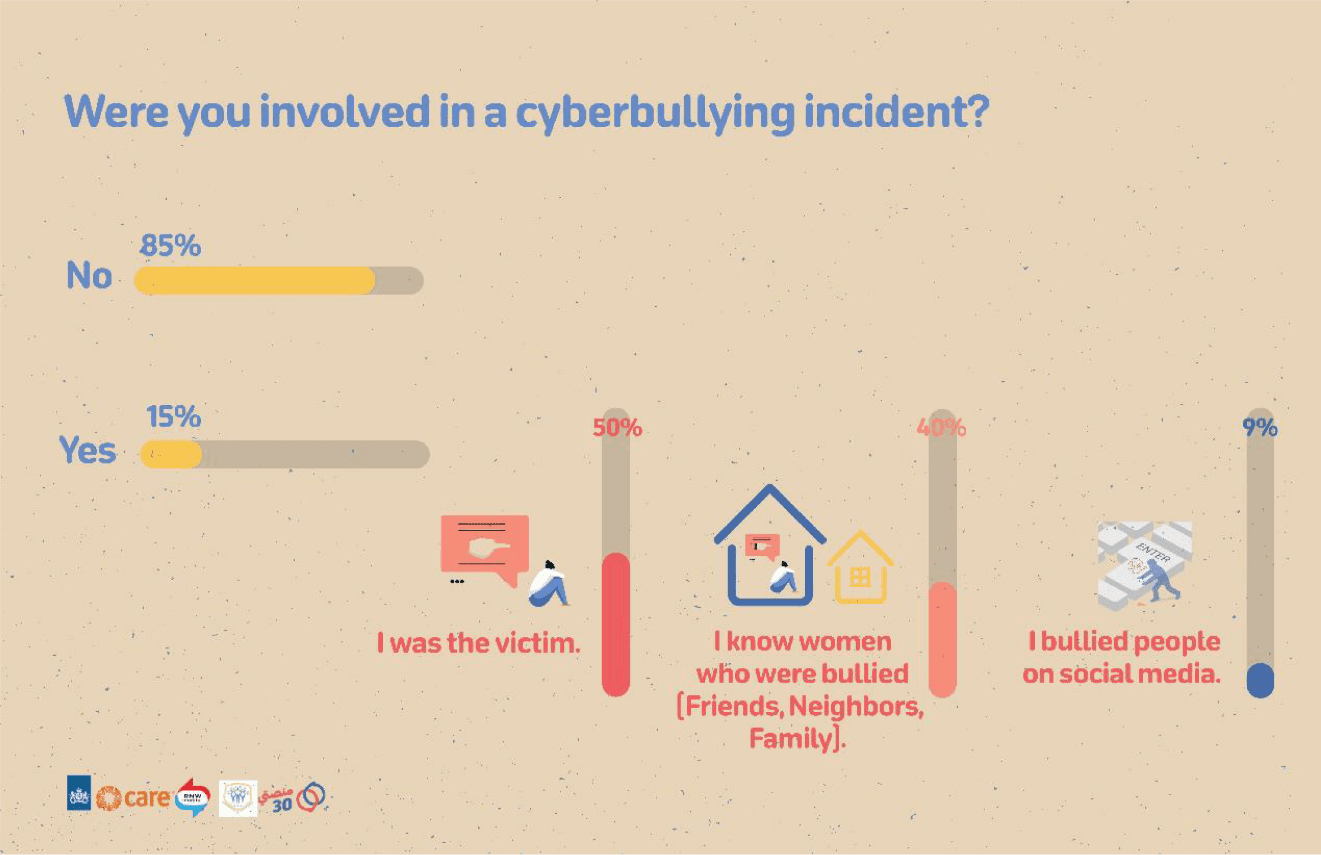
Among those who confirmed that they were a part to incidents of cyberbullying, 40% of this category indicated that they know women (family, neighbors, friends) who have been bullied. One of them wrote: “The neighbor’s girl commented on a post talking about someone who married a beautiful girl with a large dowry, And when the girl commented that the topic was exaggerated, a group of young men replied that the girl who got married is beautiful and deserves it, but surly you are **** don’t deserve even one Riyal. Others replied saying that she knows that she’s ugly and no one will pay one Riyal for her, and other similar things. The neighbor’s girl entered a state of depression from those responses and comments”.
One girl said: “I uploaded a series of tweets about the impact of wars on women and children in particular, the tweets were very popular, but in return I received a lot of bullying and abuse that could not be counted. I was surprised by some messages and I was shocked that it was possible for some people to be so harmful to that extent. Well, if you did not like my proposal, you could have ignored it. I was threatened and intimidated and they asked that I don’t talk about anything political or humanitarian, because I am only a woman, and I cannot raise topics from their point of view even the discussion about it is for men. On another time I talked about the case of Intisar Al Hammadi, and I expressed my sympathy towards her and with what happened to her, I received threatening messages until I deleted the tweet, and I was slandered and accused of false accusations”.
Another one wrote: “Because of my excessive weight, I was bullied in one of the groups. My picture was published, and everyone made fun of me. This may be a joke, but it still left a mark in my soul and left me with insecurities, and I hated myself”.
From the participants’ point of view, the worst cyber-bullying behavior against women is “fabricating pictures or videos of a woman and publishing them on the Internet” (77%), followed by “impersonating another identity to harm a girl or woman on the Internet” (49%), and 48% goes to abuse of women in relation to their social status (divorced, never married, did not have children..etc).
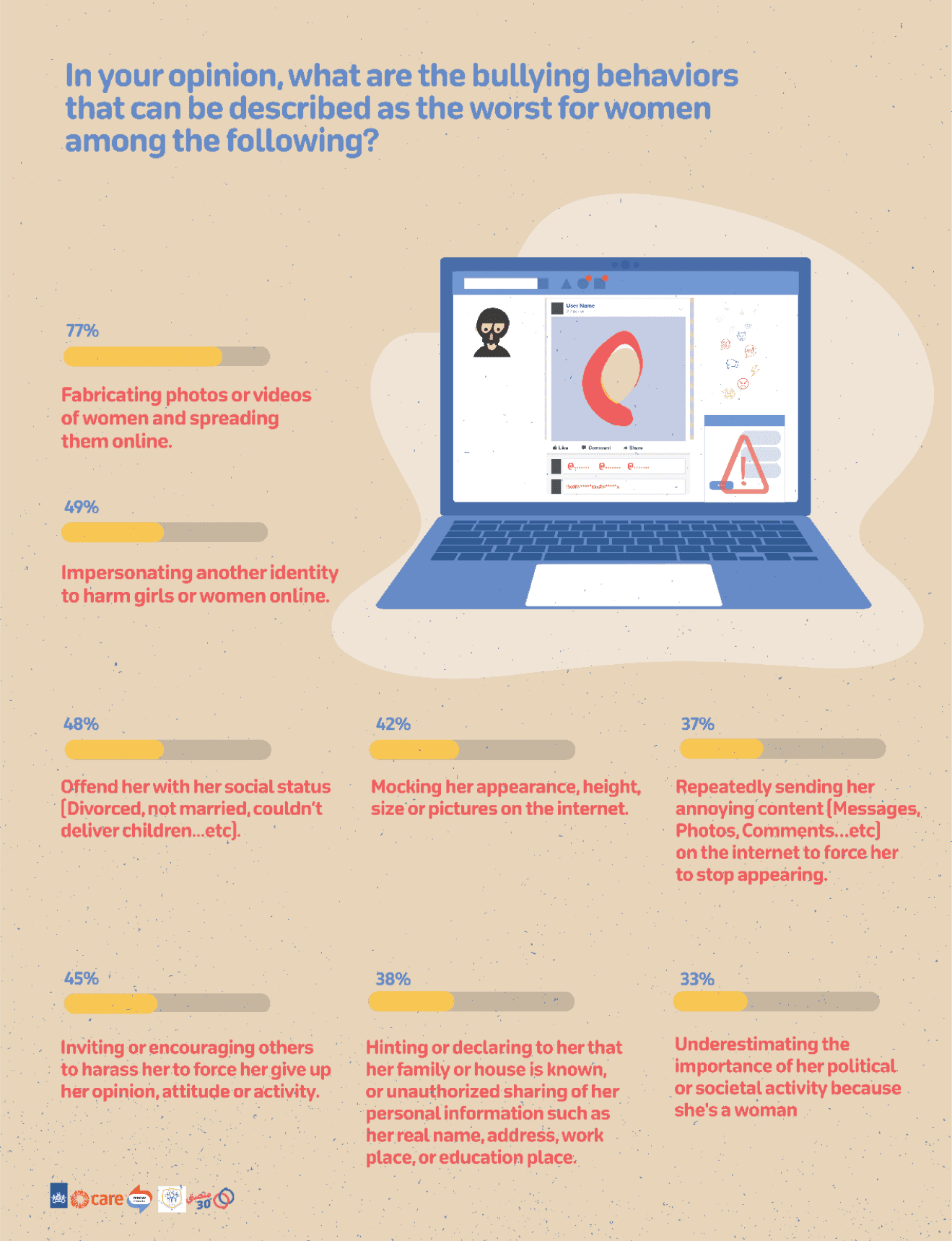
Regarding the reasons for the existence of bullying, 70% pointed their fingers first to “the societal view of women and their digital identity (on the Internet)” as the most important reason for the occurrence of electronic bullying against women in Yemen, and secondly (69%) to “the absence of laws deterring this phenomenon,” and thirdly (48%) referred to “psychological disorder of bullies themselves”, while “political interactions and seeking to exclude competitors and competitions” got only 17%.
In terms of gender, females (74%) are more likely than males (68%) to talk about the societal outlook, as well as the absence/weakness of laws deterring this phenomenon, by 71%, compared to males (67%).
6% indicated other similar or different reasons, including “customs and traditions,” “free time and unemployment,” “lack of religious and moral manners,” “weak education,” and others.
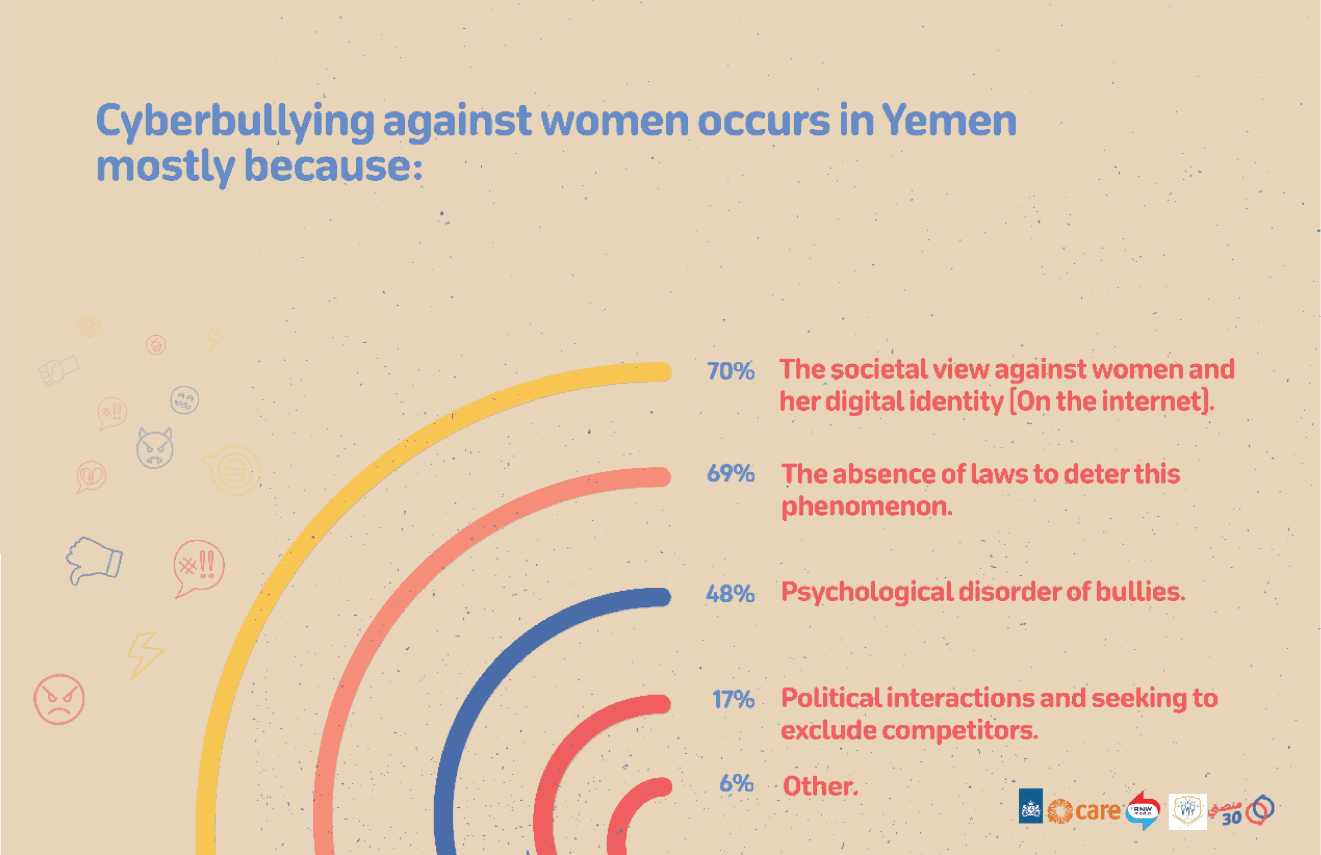
Bullying doesn’t necessarily come from a male against a female, and from a man against a woman. According to the survey participants, it may come against a woman from another woman (90%), and there is no significant difference here between female voices (93%) and male voices (88%).
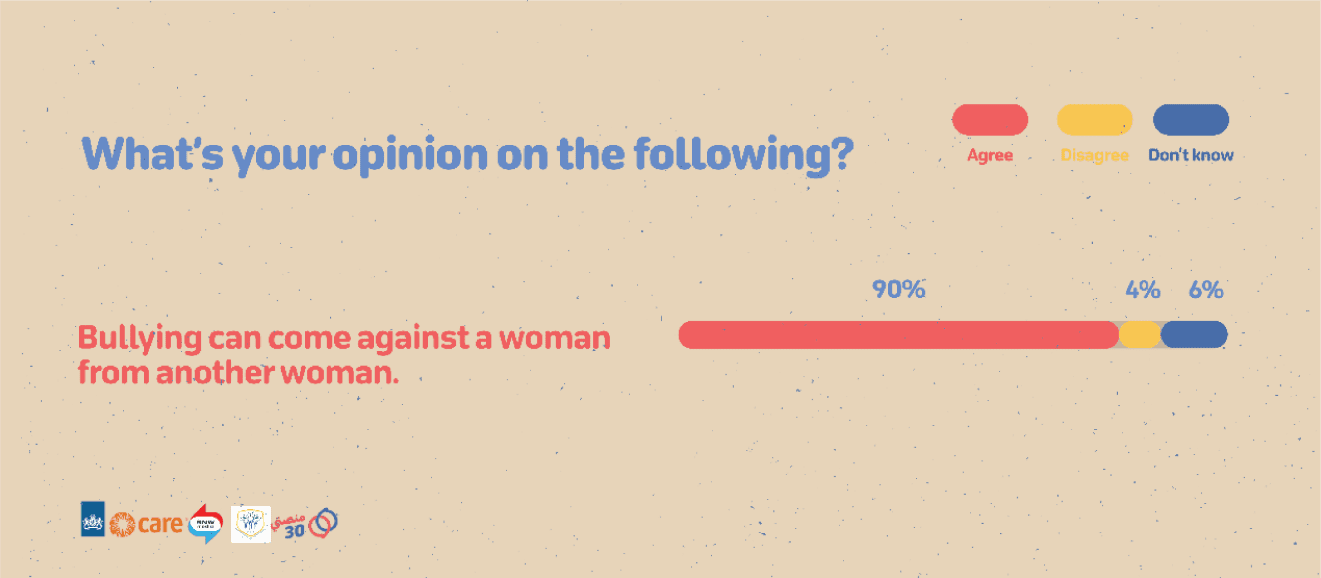
Also, 79% of the participants confirmed that bullying is not just an exaggerated description of heavy jokes, and despite this high percentage, 14% of female voices and 15% of males tend to see that bullying is just an exaggerated description of heavy jokes only, which constitutes 15% of the overall total votes participating in the survey.
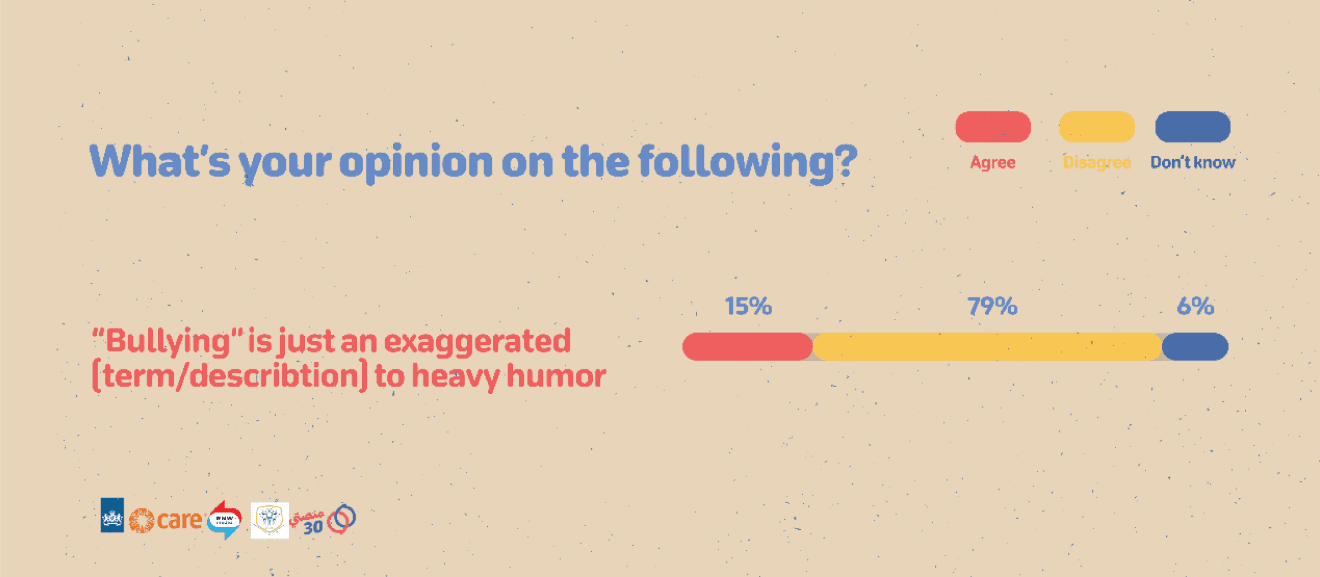
85% of respondents agree that “promoting digital awareness in the use of social networking sites makes women less vulnerable to cyberbullying.”

76% also confirmed that “women remain silent when they are subjected to cyberbullying for the fear of violence or societal defamation later.” The geographical differences here do not refer to detailed information according to the surveys’ mechanism, where the percentages of votes within the governorates were as follows:
- Taiz: 82%.
- Sana’a: 79%.
- Ebb: 75%.
- Aden: 73%.
- Hadhramout: 70%.
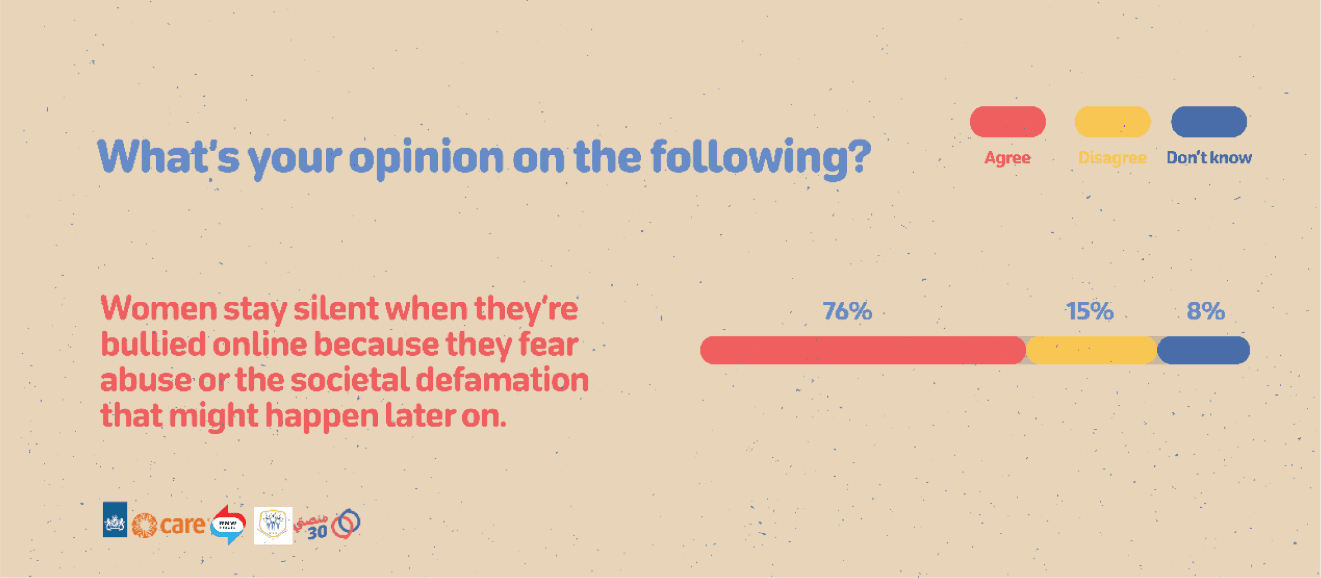
Among the proposed solutions to confront this phenomenon, 93% called for “reforming and strengthening legal and regulatory frameworks to monitor, track and deal with the phenomenon”.
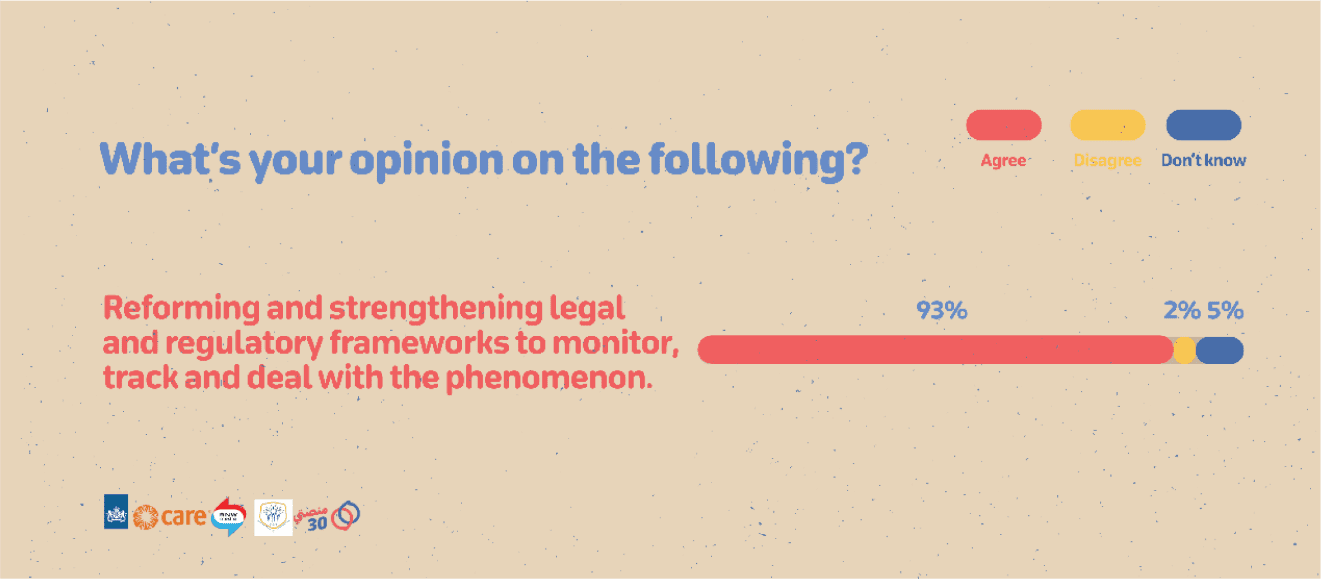
89% also called for “adopting advocacy campaigns to address and end the phenomenon of cyber-bullying against Yemeni women”.
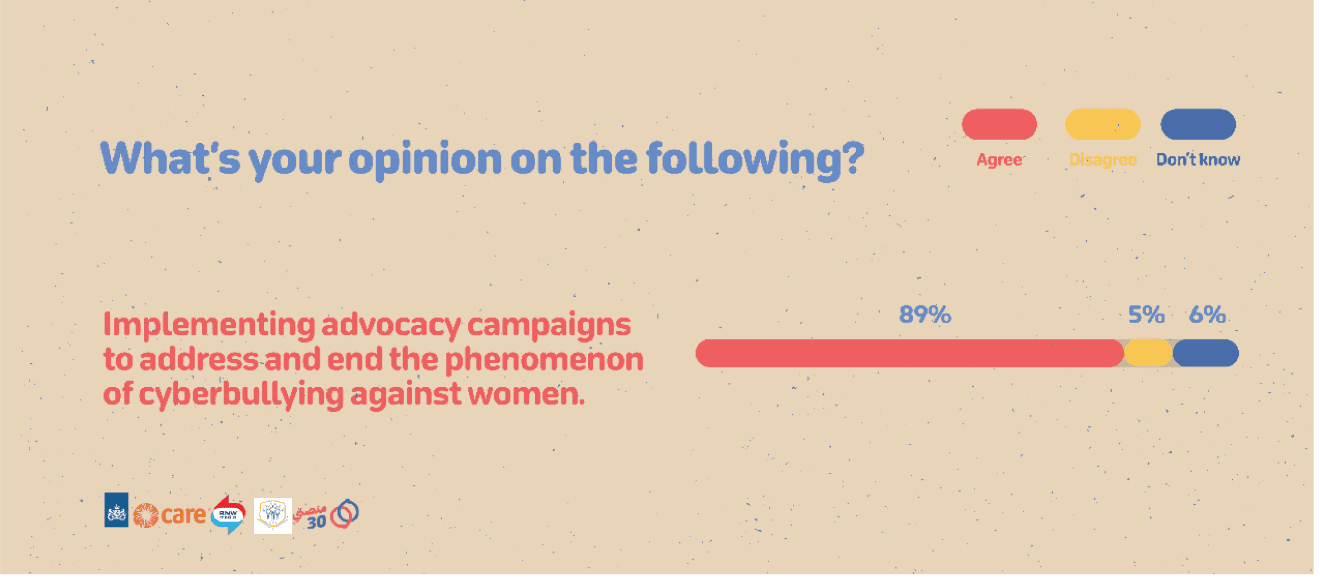
1172 participants, 35% female and 65% male, participated in the survey, from the governorates: Sana’a (28%), Taiz (22%), Aden (21%), Hadhramaut (8%), Ibb (7%), Al Hudaydah (5%), and others (9%).
The “Cyber-bullying” survey, in cooperation with “Wogood for Human Security” Foundation, comes within the activities of the “Women, Peace and Security” project implemented by Manasati30 under the supervision of RNW Media, and funded by the Dutch Ministry of Foreign Affairs and Care Netherlands.
